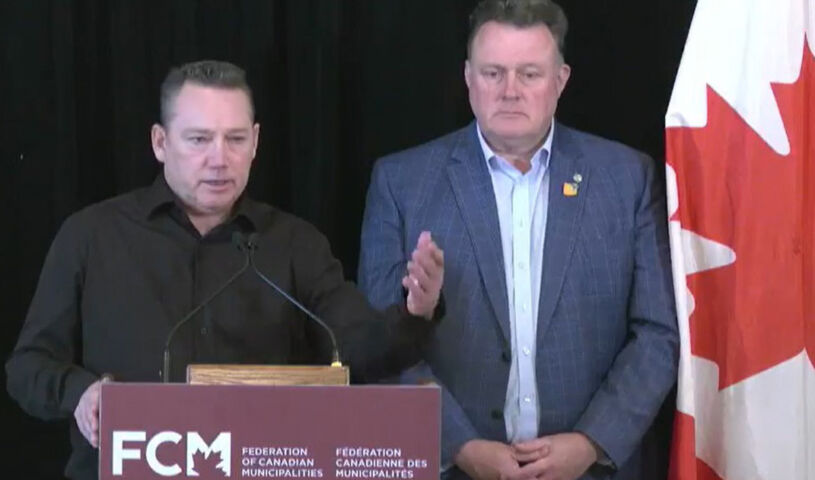Small towns are feeling the cost of Canada’s housing crisis
 Increasingly, small communities across the country are seeing eyewatering housing prices. Photo: Adobe Stock
Increasingly, small communities across the country are seeing eyewatering housing prices. Photo: Adobe Stock
Much of the news around Canada’s affordable housing shortage tends to centre around big cities like Toronto and Vancouver. But increasingly, small communities across the country are seeing eyewatering prices.
In the township of Wilmot, Ont. the high cost of housing means that even the new mayor has struggled to find a home in the community. Natasha Salonen was elected mayor of Wilmot in October 2022. In her role as mayor, she also serves as a regional councillor. Wilmot is a rural municipality of around 21,000 people just outside Kitchener, Ont.
Salonen said that finding a suitable and affordable place to live is becoming more difficult in rural communities like hers. “People I went to high school with, who want to stay in Wilmot, are being priced out of the market and having to leave,” she said.
Average Home Prices Soar
According to the Waterloo Region Association of Realtors, the average July sales price for a home in Wilmot was just over $916,000. In the neighbouring township of Woolwich and Wellesley the number was closer to $1 million.
The rising cost of housing in rural communities isn’t limited to just Wilmot. Last year, the Parliamentary Budget Office released a report into rising house prices across Canada. The report found that between 2015 and 2021 the average cost of a home increased by 97 per cent.
The report also stated that average house prices in Hamilton, Toronto, Halifax, and Ottawa were more than 50 per cent above affordable levels. Average house prices in Vancouver, Montréal, and Victoria were between approximately 30 per cent and 45 per cent.
Those skyrocketing prices are particularly impacting young people who want to own a home. “We have a real problem across the whole country for young people and working families trying to get into the housing market,” said Salonen.
Rural Ontario Housing
In 2022, the Rural Ontario Municipal Association (ROMA) formed an Attainable Housing Task Force aiming to help spur development of attainable and purpose-built rental housing in rural communities.
The task force focused on finding solutions to three main issues: prioritizing attainable and purpose-built housing, addressing barriers to development, and incentives to spur housing development in rural areas.
The provincial government has placed the blame for Ontario’s housing shortage on municipal red tape. However, municipal leaders disagree, saying that the province’s own regulations often standing in the way.
“One of the criticisms of the premier’s task force was that municipal governments are too slow in moving things through,” said Robin Jones, Chair of ROMA and mayor of the Village of Westport, Ont. “That is not the rule with rural governments because we can be nimble.”
ROMA’s report highlighted barriers in provincial housing policies that it said, “hamstring efforts by municipal governments and others in rural Ontario to implement well-designed solutions.”
The report suggested new limits on the types of land tribunal appeals that can be filed and disallowing appeals for attainable or purpose-built rental housing projects. “While challenging, the desire for a balance between developers’ rights and those individual citizens, property owners, or community groups is now compelling municipalities to invest significant time and financial resources in tribunal processes that delay and increase the cost of legitimate, well considered development proposals,” the report stated.
Saskatchewan Feel the Pinch
The Saskatchewan Association of Rural Municipalities (SARM) says municipalities require more funding to address their housing needs.
“Affordability is an issue that all Saskatchewan residents are facing, with inflation occurring at the grocery store, the gas pumps, through our utility rates, and in our housing costs,” said SARM President Ray Orb. “SARM would like to see that any program or support offered by either the federal or provincial governments ensures flexibility and allows for autonomy in both rural and urban settings.”
One of the major issues impacting rural communities is a lack of affordable rental accommodation. “We are frightfully short of rental accommodation,” said Jones. The task force’s report recommended there should be an expedited path to approval for some types of residential development, including affordable housing and rental units.
That was a point echoed by Salonen.
“Often our rental markets are a lot smaller, and there just isn’t as much opportunity to rent. That lack of housing is impact communities in wide-ranging ways,” she said. “Local government or health services in rural areas can struggle to attract staff because they cannot find an affordable place to live. How do you get employees out here when they would effectively be homeless and working?”
For Orb, there is no one size fits all approach to managing these issues. “Municipalities need the freedom and the funding to determine what is best suited for their community,” he said. MW
✯ Municipal World Executive and Essentials Plus Members: You might also be interested in Charles-Albert Ramsay article: Forward cities matter.
Ibrahim Daair is staff writer at Municipal World.
Related resource materials:



